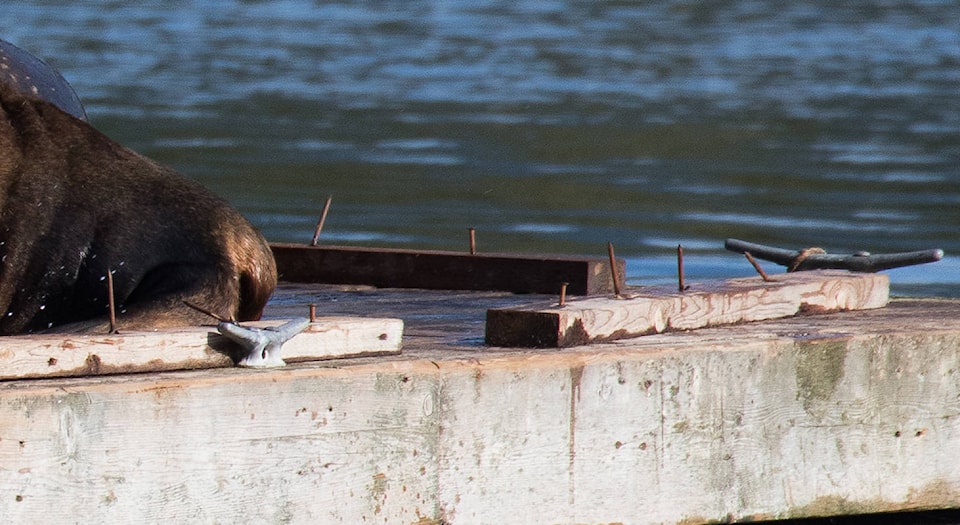Local concerns over nails seen sticking out of a float frequented by sea lions near Ucluelet’s public boat launch have sparked an investigation by the Department of Fisheries and Oceans Canada, according to DFO Marine Mammal Coordinator Paul Cottrell.
Wayne Barnes of Tofino Photography snapped some photographs of the privately owned float at the end of Seaplane Base Road last week that show large nails, roughly evenly spaced along the perimeter of the float, spike-side up and roughly eight centimetres high.
Cottrell told the Westerly News that DFO is working with the Ucluelet RCMP to determine if the nails were installed on the float to injure sea lions that tried to climb onto it.
“If it was done intentionally to disturb sea lions, or injure them, that’s not cool,” he said. “Obviously, injuring animals is cruel and inhumane and, if it was done on purpose, then that’s something that’s not acceptable under the Marine Mammal Regulations and other regulations…It’s something that we take very seriously, so we’re definitely looking into it.”
Local marine mammal researcher Wendy Szaniszlo said placing nails on a float to keep sea lions away would be both dangerous and ineffective.
“As the sea lions jump up, their full 350 kilograms is coming down on those [nails]. It just seems incredibly cruel,” she said adding she checked the float out last week and saw the nails as well as several sea lions. “In addition to being cruel and inhumane, it’s completely ineffective…The fact that nails were used greatly disturbs me. They could definitely cause serious injury to the sea lions. Sea lions are pretty robust, they can take a fair bit, but those nails are big.”
She acknowledged sea lions are large animals that can damage docks and create noise by barking, but said there are a variety of safer and more effective methods of keeping them off local floats and docks, like installing wooden posts, or rails, or visual repellents like flags, pinwheels and streamers.
“There is definitely a lot of options out there that are far more humane that don’t injure people, that don’t injure the sea lions and that have been shown to be effective and keep sea lions off the docks,” she said.
She added a key way to keep sea lions off local docks is to stop luring them into the harbour.
“Just like with food conditioned and habituated bears in town, these sea lions are becoming habituated and food conditioned and that’s why they’re coming into the harbour and staying in the harbour,” she said.
“I’ve seen them hand-fed off the back of sport fishing boats and I’ve seen fish tossed to them multiple times from a local processing plant in the harbour as well. Even if fish are being cleaned and nets are being cleaned in the harbour, all that food is readily available for the sea lions.”
She said sea lions play an important ecological role, but their smell, noise and size make them unpopular amongst some locals.
“Everyone has the right to their own perspective, but I don’t find them a nuisance at all,” she said. “They’re incredibly intelligent. They are playful. They’ve got unique social dynamics. They’re sentinels of the marine ecosystem. They’ve got a diverse diet. They’re one of my favourite species to study…I would love it if other people shared my perspective, but not everyone does.”
She added that some fishers believe sea lions are hogging their livelihood.
“I do think that there is a mentality that they are eating all the fish,” she said “It’s one of the reasons that I got funding through the Clayoquot Biosphere Trust to do a diet study, because I think differently and I want to do some science to find out what they’re really eating here in this area.”



